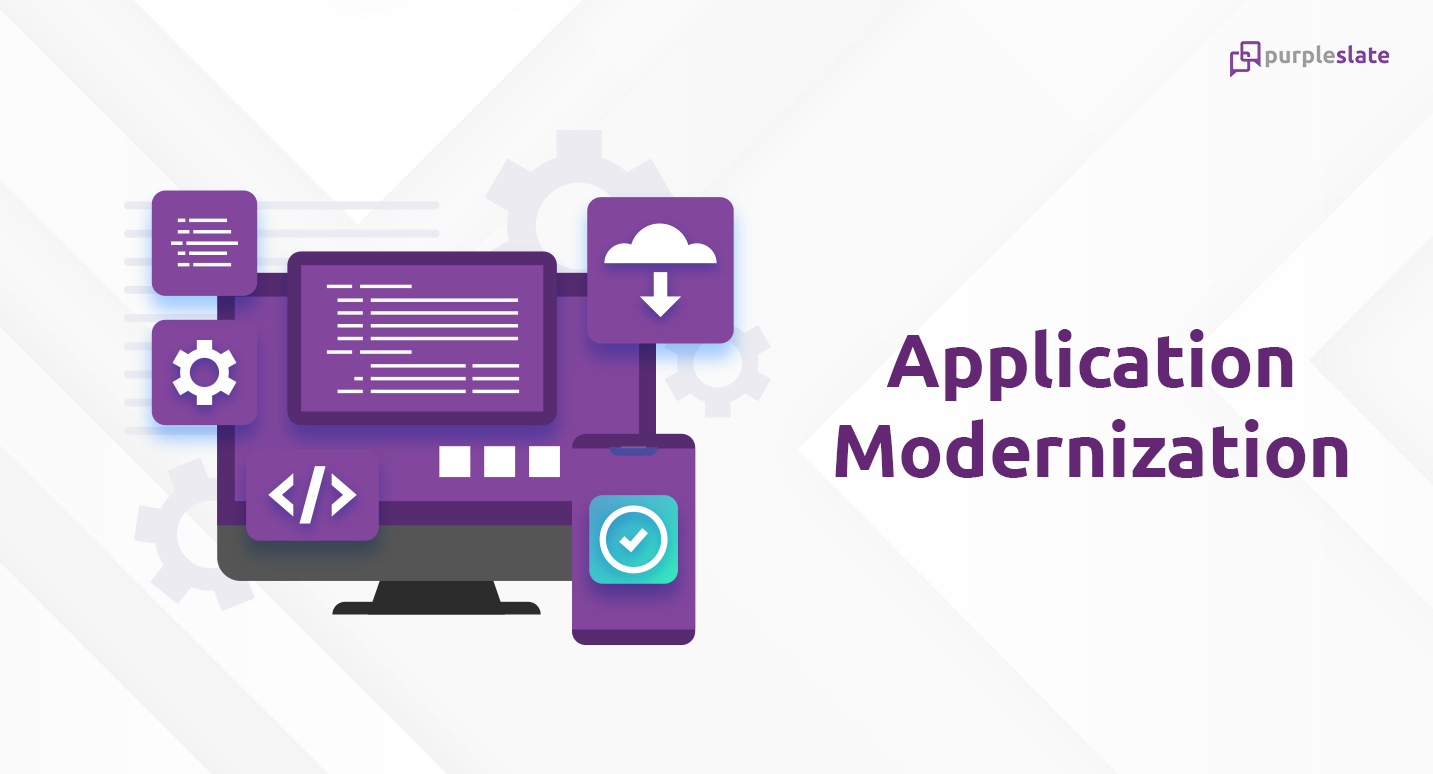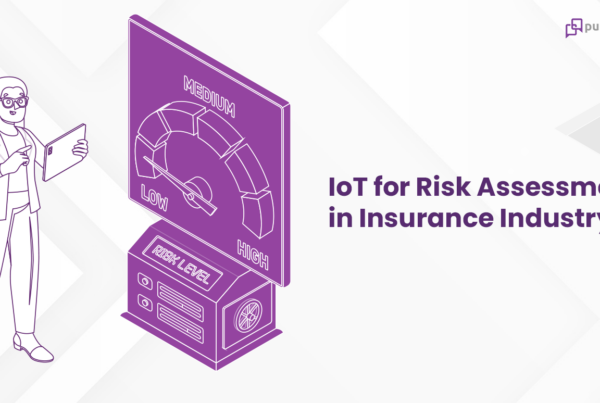
Introduction
In any medium-sized or large enterprise, the trend now is Application Modernization. More than 50 percent of the IT budget is now allocated for Application Modernization. Before going on to discuss Application modernization, let us understand what this “Application Modernization” terminology is all about.
Applications, now, in short, called apps are software programs that run on any device, be it on a high-end server, desktop, laptop, tablet or mobile phone. It is created to do one or more specific processes or activities. Modernization on the other hand is the process of starting to use the most current methods, ideas, equipment, and technology to suit the existing ecosystem. Generally, modernization is the process of digitizing traditional processes on a timeline that aligns with our customer’s business strategy. Application modernization happens when an enterprise adds new, modern functionality to what an application already does.
Application modernization is generally part of a wider program of work mostly called Digital Transformation. This happens when the proposed software bridges the gap between so-called legacy systems running the business, and new technology enabling the innovation needed to succeed in a digital marketplace. It gives organizations new value from their core IT investments and is a key foundation for the organization’s future.
Application modernization is a technique that enhances a company’s software delivery performance by modernizing older legacy software systems rather than replacing them. For many organizations, this involves re-platforming existing legacy workloads onto a modern cloud platform based on the likes of Kubernetes and breaking monolithic applications into smaller pieces like microservices. It’s also common to adopt new ways of working, like DevOps, site reliability engineering (SRE) and Continuous Integration and Continuous Deployment (CI/CD), as part of application modernization.
The process of modernizing outdated software to interact with newer infrastructure platforms, frameworks, and programming languages is known as application modernization. The terms “legacy modernization” and “legacy application modernization” are frequently used to describe this technique. It is analogous to renovating an older home to take advantage of improvements in efficiency, safety, structural integrity, and so on. Legacy modernization extends the lifespan of an organization’s applications while simultaneously utilizing technological advancements, as opposed to completely replacing or retiring an existing system.
The primary purpose of application modernization is to bring agility back to legacy applications by migrating them to a modern platform, breaking up monoliths into smaller easier to maintain components using contemporary methods for software development and deployment, such as microservices, and fusing the new with the old.
Application Modernization values new capabilities just as highly as it values the current functionality and dependability of the present application that keeps the lights on. It is to run and transform the business; moving fast while breaking nothing. It is like making changes to the aircraft during flight. So, what the outcome would look like, is different for everyone, and depend on what the organization wants from modernization. Generally, the answer is “like before, but better.”
Many businesses discover that a sizable portion of legacy workloads, underlying platforms, technologies, and conventional development methods are impeding company agility and innovation. This is due to the fact that many legacy systems were created prior to the emergence of cloud computing, cloud-native development methodologies, Linux containers, and other recent innovations. However, many of these workloads are still business-critical and represent significant long-term investments that cannot be easily replaced or retired.
Because of this, organizations are forced to strike a balance between the requirement to maintain existing systems and their ambition to innovate, satisfy changing customer demands, and seize new possibilities. These legacy applications can be so human-intensive, expensive, and resource-intensive to maintain that they significantly impede innovation.
The words “enterprise” and “core” are frequently prefixed to the word to denote scale, importance, and location, respectively. Apps and systems are sometimes used interchangeably, and we frequently mention “legacy” applications as well.
Legacy applications are also often monolithic applications. Monolithic applications have two disadvantages that make it desirable to modernize them: they are difficult to update, and they are complex and expensive to scale.
Monolithic apps are also difficult to update for architectural reasons. Because all of an application’s components ship together, it is near to impossible and costly to add features given the overhead of complexity and integration challenges.
If even one component of an app faces load and performance challenges, it can become necessary to scale up the entire app only to serve the most-demanding single component. This approach comes with considerable wasted computation.
The generic strategy for modernizing an application is to move to microservices architecture, make the components smaller, loosely coupled, and be deployed and scaled independently of one another. This approach is where much of the core value in modernization may be found, although posing its own set of difficulties.
These applications are the heartbeat of the enterprise. They must work, whatever else happens. Consider a bank’s customers who are suddenly denied access to their funds due to an application upgrade glitch. The cost of lost revenue and brand damage, estimated at $1.7 trillion as per research, are the two reasons why some enterprises have yet to begin their digital transformation journey.
Core applications are often many years old, mired in complexity, and the original development team has moved away and the product company has withdrawn its support. But as the saying goes, change is constant and enterprises are left with no option other than to take up the digital transformation journey.
In the tech world, anything termed as “legacy” has a perception problem. Legacy applications, often created in COBOL or Programming Language One (PL/I) or Mainframes, are simply core programs written some decades ago. Legacy applications are the original structures supporting every piece of organizational IT architecture in BFSI sectors.
A legacy COBOL application, often hosted on the mainframe, might support a bank’s everyday operations, such as handling ATM transactions and executing overnight batch processes. Low maintenance, high performance, no-nonsense applications silently perform the backbone activity of the bank or insurance sector.
It is fine for the banks to continue with this application, but the bank’s customers want a mobile app for banking services. So the banks are forced to do remodeling to meet customer demands to stay relevant in the eco-system. By taking up application modernizing the bank adds new functionality without affecting everyday, backend processes on which their business depends.
Application Modernization Components
Container Orchestration
Many application modernization strategies revolve around re-platforming legacy applications onto the container orchestration platform like Kubernetes. It can help organizations deliver and manage containerized, legacy, and cloud-native applications, as well as those being refactored into microservices. This platform can unlock new value and innovation even in existing business-critical legacy applications.
Automation
The container orchestration platform automates many of the manual processes involved in deploying, managing, and scaling containerized applications. Additionally, automation is essential to modern working practices like DevOps and CI/CD processes, which enable shorter release cycles.
Microservices
Microservices are both architecture and an approach to writing software.
APIs
APIs or Application Programming Interfaces are all about integration—connecting data, applications, and devices across your IT organization so that all of your technologies can communicate and work better together.
Cloud services
Infrastructure, platforms, or software that are hosted by third parties and made accessible to consumers through the internet are referred to as cloud services.
Does Application Modernization Work?
More customers have now started to recognize modernization as the most sustainable, risk-averse transformation strategy out there. Different studies have shown that developing applications from scratch had a success rate of 26 percent in contrast to application modernization reporting a 71 percent success rate. It is almost 3 times than to start from scratch and rebuild the entire application.
Why Choose Modernization?
With recent studies, it is now evident that modernization is the safest business bet for the enterprise.
The alternative option is replacing the original application with a packaged, off-the-shelf alternative that will sacrifice most, if not all of the organizational data and business intelligence.
The ”rip and replace” and the similar ”lift and shift” approaches may be why 70 percent of digital transformation projects fail, creating a huge burden on enterprise finances, that is pushing larger enterprises for application modernization. Even if it becomes a success with a humongous effort, the ROI is not that convincing to the board members.
Hence, application modernization is no longer an IT-only thing. That time is over, and our recent research proves CEOs and other stakeholders are now making modernization decisions, not only with respect to strategy and cost but also on the target platform, architecture and processes.
Enterprises have to keep in mind that application modernization is not a one-time activity, but an ongoing one as always the need arises for changes to any one of the existing applications.
Application Modernization has options that include re-platforming, re-hosting, recoding, rearchitecting, re-engineering, interoperability, replacement and retirement, as well as changes to the application architecture to clarify which option should be selected.
Benefits of Application Modernization
The advantages of application modernization are typically summarised as increasing the velocity of new feature delivery, exposing the functionality of existing applications to be consumed via API by other services, and re-platforming applications from on-premises to cloud for application scale and performance as well as long-term data center and IT strategy.
The main challenges with application modernization are typically cost and complexity. Moving an application from on-premises to the cloud without considering the ROI is moving applications for the sake of moving them. Conversely, other applications might benefit meaningfully from re-platforming or rearchitecting but are so heavily coupled to existing systems and infrastructure that the complexity of modernization might outweigh the upside.
Like most things, the secret to application modernization success is the strategy and choosing projects where the advantages of cloud, speed, performance, scale, new feature development, etc. offer the given application a clear route to improved user experience and ROI.




